|
The Legend of Argus: The Complete History of Rygar has been featured across podcasts, articles, social media, and other platforms. Here's a few examples.
Articles on Hardcore Gaming 101 and Atari Gamer
Tweets from retro gaming experts John Riggs and Jeremy Parish
Giveaway contest with the Retro Game Guys Podcast
Wax Pack and Sticker Set giveaway contests
The book is discussed on the Speaking of Which podcast
Interview on Cafe, BTW: A Morning Coffee Gaming Podcast
Featured in Cool Sh#T Magazine
Featured as a testimonial at Comix Well Spring
Check out my Twitter feed to see tons more posts and highlights on the book.
The book has long since sold out, and I'm currently working in an extended 2nd edition. Stay tuned for more details.
1 Comment
 Amir Rajan is the creator of A Noble Circle, adapter of the #1 hit iOS game A Dark Room (originally created for the web by Michael Townsend), and creator of the prequel to A Dark Room: The Ensign. His games conjure deep, swaying, and often conflicting emotional responses in the players through the use of original storytelling techniques. The worlds he creates are visually simple, yet intensely profound and complex. Today we chatted about his experiences as an indie developer, his thoughts on his projects, another prequel to A Dark Room, and his next game Sasha. Brian: What I found to be so striking about my experience with A Dark Room was the way the progression of the experience made me feel compelled to push forward despite the slow but steady realization that the community in the game, the community I started and oversaw, was being crippled by my advancement (literally enslaved). As more people joined my village, my resources expanded, and more features were unlocked, the stronger the urge was for me to drive ahead. It reminds me of how, in real-life, when people gain status and wealth in the world, they start to lack sympathy for those around them, blinded by their own ambitions. In short, the feeling of guilt was present, but it was overshadowed by my desire for growth and exploration in an expanding universe. Was this part of your intent, to have users experience these types of emotions? Knowing that this made some people quit the game, does that feel like a success for having evoked such strong emotions? Amir: The game started as a web game and I (I'd like to say) "re-envisioned" it to a mobile medium. The web version didn't have any of the builder commentary or the slave transition. The builder was simply an NPC that was used to build stuff. Mentally I really connected with the builder, and wanted to answer my own questions: Who was she? Why was she helping me? So the emotions in the game were definitely deliberate and vocalized through the builder. It's funny actually, someone reached out to me on twitter about the slaves transition and how "it wasn't his choice". He was pretty angry about it. His Twitter profile background was that of Fallout New Vegas, where you can literally [be] part of a slave driving army. I think the emotions are exasperated by the fact that there aren't any pictures. In fact, these kind of emotional responses (specifically not having control) were what drove me to create the moral events in The Ensign, where you had a direct choice of whether you would "take food from the family" or not. ...the emotions... were...deliberate and vocalized through the builder. 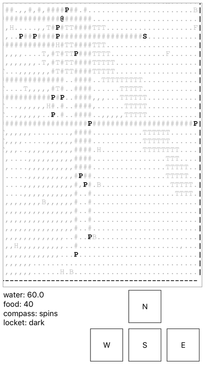 Brian: In A Dark Room (and likewise in The Ensign), the player has minimal knowledge of what the game is before starting. You take it so far as to only have one screenshot in the App Store, and it is of the very start of the game. Doing so doesn't spoil, but rather, excites attention and curiosity. Do you think that this sense of curiosity is what drew people in? Likewise, do you think it may have scared others away? Amir: Yes on both accounts. Michael and I did that deliberately so that the experience wouldn't be spoiled. After we hit the number one spot, and did an update to the game, [one] of the people on the Apple app approval process actually rejected our update because our description was "too short". I was really, really pissed about that, but we got it overridden and [were] allowed to update. It's tough balancing the "business" aspect of selling games, but we had faith that word of mouth recommendation would trump a long drawn out sales pitch on our app description page. We have a few accolades on there now. Still trying to find a good balance. [Having] good reviews certainly helps. Brian: What did it feel like to see A Dark Room hit #1 in the App Store? Did you ever think it would gain such popularity? Amir: When it hit the number one spot I was in complete utter shock. Definitely was not in a good state of mind, surprisingly. This expert from my blog explains it well: "This is the best way I can describe what I’m feeling right now: I’ve bought a lottery ticket, and the lottery commission has revealed 5 of the 6 numbers. And so far, I’ve gotten those 5 numbers right. I know I’ve got at least the winnings for those 5 numbers in the bag. But now I’m waiting for the 6th number… that jackpot number that changes your life forever. The lottery commission hasn’t revealed the 6th number yet, they haven’t even told me when they’ll show the 6th number. So I’m stuck in this weird limbo, where others see success and all I can do is temper expectations, be “responsible”, and move forward as if that 6th number will be wrong…. still number 1, just checked." I didn't sleep well for almost a month. Every hour or so I'd wake up and see if I were still number one. Still never got used to it When [A Dark Room] hit the number one spot I was in complete utter shock...I didn't sleep well for almost a month. Brian: I can only imagine what that feels like. Amir: Yea, we aren't prepared for that kind of success. When all was said and done Michael and I made about 700k that year we hit #1. 200k during that 18-day period at the number one spot. The rest was long tail trickles. Sadly, after taxes, Apple’s cut, and splits…both of us came away with about 270k. So that part was also not fun to realize. [I] was able to buy a house and pay it off though ^_^. Now I live mortgage free and don’t need to chase the mighty dollar so much anymore.  Brian: You spoke to some of the differences between the original web-based version of A Dark Room in the in-game commentary. Which difference did you find to be the most critical for the mobile experience? Amir: Pacing and the builder's commentary/storyline. I felt that's what put the game over the top. The mobile version is about 3 times faster than the web version. The game is a bit more challenging too. The DPS for soldiers, snipers, and feral terrors was nearly doubled in the mobile version... rage inducing I'm sure. I didn't expect the builder's interactions would be so powerful. But I do feel that's what "made" the game…Your thoughts on this? Brian: Pacing is so key in gameplay, and I find that in a mobile experience players would have struggled with a slower pace. As for the difficultly, I actually found it to be rather well balanced, but I tend to enjoy a bit of a challenge. For me, "dying" wasn't too frustrating, but more so, I blamed myself for venturing too far, too soon. Amir: The Ensign was definitely an extension of that "your fault" mentality. I wanted to make sure it was 100% fair. And yea, the early moments of the game when the forest opens up was key. Didn't want people to play for 30 seconds and leave a bad review. That plus the ability to pick it up, play a little bit, then put it back down was extremely important too. 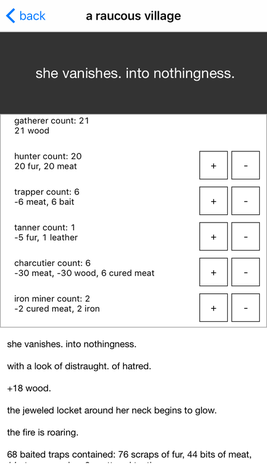 Brian: A Dark Room starts with darkness when you meet the girl, and comes full circle with darkness returning when the girl leaves. It’s a powerful, emotional moment in the experience, and for me, a point where everything felt like it was crashing down and at the point of no return. This isn’t a question. Amir: The fire going out when she left was deliberate. Not sure how many people caught that. Brian: You mentioned how you have never actually met Michael Townsend, the original creator. Do you think you two will ever meet? Amir: If Trump becomes president I may move to Canada. Brian: Not a bad idea. Amir: He said I'm welcome to his couch :-) Hopefully we'll meet soon, but definitely haven't met yet. It's on my bucket list ^_^ Do you find it weird that we haven't met? Maybe it's poetic that we never do :-P Brian: Actually, not really, not in this day. I collaborated with an artist on a web-based project I created, and we haven't met yet. We follow each other on Instagram though. Amir: Cool, cool. The composer I [worked] with for ANC is in Brazil. Haven't met him either. But yea, I agree with you. Don't find it too weird personally. Brian: In playing A Noble Circle and The Ensign, there is a clear, anti pay-to-win, in-app purchase message. In my opinion, in-app purchases, for the most part, replace what was once the designed challenge of a game into something that is now constructed, often purposely, to be purchased for the sake of completion. Which, in turn, taints the experience, removing the fun and entertainment elements for something that feels like it is run by finance people instead of creative folks. What are your thoughts on the direction mobile games have long been heading and do you foresee a backlash? Amir: I've struggled with this myself. I'm hoping there is a backlash... but it's unlikely. Premium games are a "lost cause". I quoted it because I don't think AAA will go that route. As for indie game devs, it may provide an opportunity to thrive (since we aren't competing with shops like EA). And we also don't need as much money either. I'm happy netting $170 a day. And can live comfortably off of that for the foreseeable future. But I do want to build a culture of "gifting" games and "free to start" games like POTUS and Kung Fury do that very tastefully. So my next game might be "free to start". And maybe ANC will become "free to start" too. You may have noticed that ANC - Prologue is a free offering. But I'm not ready to jump ship yet. We'll see how this year goes. Sasha, my next game, will be about "unrequited love”. 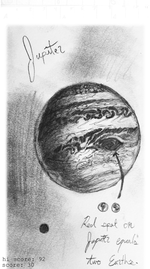 Brian: From A Dark Room to A Noble Circle it appears that a strong motif of yours seems to be a world that is visually simple, yet with an underlining complexity of somber emotions. And these emotions and layers of details get richer as the player progresses further, learning more of the world around them. What attracts you to this style of gameplay and this form of story telling? Amir: I think it works well given the current mobile landscape. Given that most games do exactly the opposite of what I'm doing. When I was a kid, I wanted to get into building video games, simply because it was a way to share an experience. Still remember the shock when Aries died in FF7 (spoiler alert). I feel I have a knack for distilling an experience down to its essence. Which works well for me since I don't have the resources to build a fully 3d or gorgeous 2d game. Only so much one person can do. When I start working on a game, there is a central emotion theme in mind. For ADR it was "the feeling of loss" (specifically the builder). For The Ensign, it was "cognitive dissonance", that feeling when you go against your ideals. For ANC, it’s "a rush of awe". Sasha, my next game, will be about "unrequited love”. Brian: I’ve released a lot of free custom maps and levels for first-person shooters, so I can relate to the notion of creating something primarily by yourself. What motivates you when you are devoting countless hours to your craft, knowing it may yield little to no money (what if it gets lost in the App Store abyss)? Amir: [I] always worry about how long my philosophies will bare fruit. So far I'm keeping my head above water. My general ideals is that I only want to build things that I myself would play/buy. I've been lucky (very very lucky) in finding an audience that operates on the same wave length that I do. There are 80+ million iOS devices out there. If I can capture even 0.01% of that in perpetuity [then] I'm happy. Cause I get to do exactly what I want to do: create. And yes, I've been called pretentious multiple times XD (I even make fun of it in ANC). So, in short. I'll keep doing it until the well dries up. Then I'll figure things out then. [I] just don't want to sacrifice my ideals too much. I've been called pretentious multiple times. Brian: While A Noble Circle has a similar visual and thematic style to that of A Dark Room and The Ensign, it differs greatly in terms of gameplay and the sounds that are the backbone of the experience. What inspired you to explore this style of gameplay? Amir: Geometry Dash. Such a fun game! That and it was a spark of inspiration from creating a virtual Go board. When you placed a "stone" on the board. I wanted to capture a sound that would "do the move justice". You get a nice "click" on a real go board, but in a digital medium I wanted to do something different. So it would randomly play a note from a pentatonic scale. You could almost make music while playing the game. So that's when I decided to take the rhythm based idea, plus the random music generation, plus Flatland and Ayn Rand's Anthem and put them together. Brian: At the end of A Noble Circle, I just bounced around for a while. At first, because I wanted to see if there was more, but then later, just to enjoy the sounds and music I was producing. Amir: You wouldn't be the first :-) Have you seen this video? Brian: That's...incredible. Amir: I made a musical score, and created a small AI to play the musical score for me. Just a silly little Easter egg. I wonder if anyone will actually try to compose the "perfect" piece. Would be cool if someone did ^_^ Brian: I want to circle back to your next game, Sasha, and the theme of “unrequited love”. What can you tell me about it? Earlier you mentioned the composer for A Noble Circle that you collaborated with, Rafael Langoni Smith. Will this project involve others as well? Amir: Not sure about collaborations yet. It's barely in pre-production. But I wanted to explore the idea of loving something that doesn't love you back. In this case Sasha is a Tamagotchi style character. Almost an OS that you take care of. Things don't go as planned toward the end of the game let's say :-D ...Sasha is inspirited by Notch's game, Drowning [in Problems]. He was able to convey a narrative without explicit "cut scenes" or story line elements. It's really amazing. I wanted to explore the idea of loving something that doesn't love you back. Brian: Are you envisioning a 2D, black-and-white world like the previous titles? Amir: Yep, I'm envisioning a B&W canvas. Sasha will be fully animated though. I think I can swing that (given that it's just one character). She may end up "making" mini games for you too. Parts of the progression will definitely be inspired by Drowning though. So I'd expect a similar game mechanic to further the story. Brian: One of the things I truly love about your games is the minimalist details in both the visuals and descriptions, because this forces me, as a player, to fill in those details, to wonder, to be curious, to be eager to learn more, and to decide for myself what the meaning is. Am I an alien? Is this my world? What does this deserted town look like? Should I feel bad for these people? Are the defectors crazed like zombies or just disgruntled? Is the dusty path a post-apocalyptic wasteland? Again: not a question. Amir: I hope The Ensign helped fill in those details a bit more. The Builder (prequel to The Ensign) will explore the relationship between Builder and Admiral. Brian: If you had unlimited resources, time, and budget, what would you build? Amir: I'd do a MOBA. Where players are like those from Dark Souls. So emphasis on swordplay, parries, etc. So stick a level 1 DaS character in the game and "go". Then you can level up to 120 by the time the game is over. Of course level would be faster :-P No one has a specific role, and you grow into the role you want to play. I'm addicted to StarCraft and LoL by the way. I tell my wife to hide my mouse during the week so I don't play it all day. The Builder (prequel to The Ensign) will explore the relationship between Builder and Admiral. Brian: This next question may sound crazy, considering your games are so beautifully packaged, feeling so complete in their simplicity, structure, and story…But do you ever think about making The Ensign into a larger, longer, more expansive experience? Amir: It was initially going to be an infinite world, you go until you die. I could see the ADR world being extremely rich. Following the history of the Wanderers. So the final installment of the main story line will eventually come. Specifically the history of the Builder... I guess that's what ADR, and TE have shaped up to be. So another game may come that explores other historical aspects of the race and their universe. 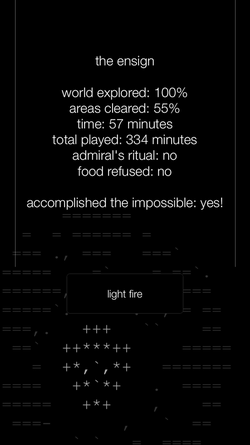 Brian: What advice do you have to aspiring indie developers out there? Amir: Start small, get something out the door in 6 weeks. Then iterate. [I] did this Reddit post that goes into details about it. [Given] all the choices, you can get analysis paralysis. So start with that [post]... build something text based even :-D Brian: Other than StarCraft and LoL, what are some of your favorite and most influential video games, books, and movies? Brian: I was so happy when FF Tactics was released for iOS. The perfect excuse to play it again. Amir: Yep! I really want a PvP based game around that concept. The storyline of the game was so great. Brian: I want to finish the interview by just reading you a few, nice quotes from the App Store:
Amir: Those reviews are the strongest reason for me to keep building :-) It's the best thing in the world I tell ya. And I'm hoping with ANC people will be more receptive to "unfinished games for now but I'll keep working on it" kind of approach to development. Seems to work well for that game at least. Brian: For me, it worked. Amir: [I'm Releasing] an update to that today by the way :-) You finally get to slide "bounce" into the lab. Brian: I'll check it out! Thank you again for joining me for this interview. I really appreciate you taking the time. And I'm looking forward to your future releases. Amir: I love this stuff...thanks for reaching out Brian, and please gift my games to your friends and family ^_^ and tell them to pay it forward if they liked it. Today my guest is video game developer, painter, 3D artist, and visual FX artist Matt Waggle. In the gaming world he has contributed as an artist in games such as Halo 3 and America's Army 3. You can view more of his work at his website: http://wattmaggle.com Brian Riggsbee: What inspires you as an artist? Have your inspirations changed throughout the years? Matt Waggle: Anything in the Arts or Sciences that touches on the topics of the nature of reality or simulated realities currently. I see a lot of what we're doing in games as a pre-cursor to something even more evolved and impactful on our future - very sophisticated tele-presence and true vr immersion. I think getting there - creating these World Systems where we can not only play but experiment and interact limitlessly with no lasting consequence or material cost is very important. This has evolved from the root of loving video games and wanting to make them. But as I've matured I don't feel games have enough, so I want to inspire ideas about advancing tech into something new and complimentary to this reality. BR: What is your process like when painting v. creating digital work? Do you find one to be more relaxing, fulfilling, or challenging? 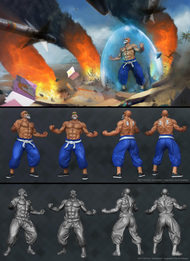 MW: The concept of the paintings are these figures lost in between space time. Sort of glitched into a bad sector of realities hard drive. I want the viewer to think of things along that nature. In games we make worlds. Crude by comparison to this one but getting more sophisticated all the time. I envision a day where virtual World Systems will become just as important as this one to many people. My process currently uses 3d to construct a scene - I spent the last 10 or so years learning 3d and I love being a little 3d demigod creating these vertices and connected faces then building the scene with lighting and materials and shooting the subject with cameras I place. In the real world this would cost 10s of thousands of dollars. I never want to stop using that tool. When the scene is blocked out like this I render an image and switch to more traditional techniques in Photoshop Painting over, scumbling, adding textural interest you can only really find in the expression of painting - the marks you leave behind is like a conversation with the viewer. I was angry here, I was solemn in here, I was gentle in this one, etc. I haven't done much physical work - you can say I'm a student in that. I'm lucky to have a great painter for a roommate and a whole year to mess around so I will be learning how to pull these images out of the digital world into the real one and look forward to the challenge. BR: Describe the difference between creating art for yourself v. for a company. 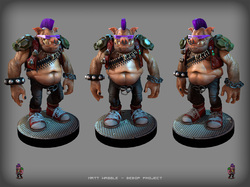 MW: Making art that is your own expression is hard - I had to learn to allow myself to do it. Maybe more accurately unlearn some of what I was told to believe growing up. I'm still learning and it's becoming an obsession now. Which I believe it should. There's a certain vulnerability you have to expose yourself to when making your own art - your putting it out to the world and asking - is it ok to survive on this? When you're starting out the answer is no no no no over and over. This is something so few persevere through - to somehow get to the yesses. And the only way to get there is to keep working on your art. Don't compromise. You will suffer through the no period but I believe it is possible for anyone to also get to the yes period and survive while living as just an artist to me is the ultimate expression of freedom. Creating art assets for a company can be very fulfilling. It can be very frustrating too. The main difference is that you are not in charge really. Even if you were Art Director at the best studio you are still satisfying so many requirements. So there's a framework you must operate in and restrictions of time and technology. It can be nice to work within challenges like that. And it can also be frustrating. BR: Is there something you created for a company that you completely dreaded working on? MW: At my core I really hate repetition. I am happiest solving problems in creative ways, once the problem is solved I move on to the next challenge. The nature of game art is sometimes very repetitive. So - making 50 bushes - tiling textures etc. can be bad for me, I can get a bad attitude about it. I see some developments in procedurally generated stuff which may alleviate the problem. Example: I solve the problem of a seed - then grow 50 random bushes. BR: In the gaming world, many companies opt to outsource part of their 3D creations to other countries. What are your thoughts on this? MW: I think the US games industry needs to grow up a little. These outsourcing firms are tenacious and resourceful and leverage internet power to take jobs from the US. The big centralized studio is old school and narrow in vision. We are in the midst of a transition in society - especially in the tech field. What I see happening are lots of "strike teams" of freelancers being formed. Teams of 5-10 who all know each other and vet each other - they form up. They then offer themselves as an outsource team to companies. Think of the 24 hour cycle - If you had a team split in opposing time zones you could conceivably produce work 24 hours a day and communicate online. What other industry can say that? I'm online daily with people on the East Coast, UK, Netherlands, Middle East, etc. and communication is very fluid. Even better than it is in some offices. I think big studios are looking for a scalable model for their production and these small teams working through virtual hubs might be a great way to have that. So outsource more? - which is weird to say but it's inevitable. Try to create a manageable sized team with little overhead - then offer your experience and ability as an entire team. BR: For artists out there looking to start a career in gaming, what advice can you offer them? MW: I got my first Game Artist job through a friend. I got my last Game Artist job through a friend. Put yourself among the people and places doing what you want to do or it will be much harder to find peers. QA is a great way to get started - My first job in the industry was doing QA for SEGA. Find what you like to do and specialize in it. Define your process and only alter it to make an improvement. Embrace the iterative process. Make yourself indispensable somehow. Don't take things personally - it's a job. Stick up for yourself. Don't work for free. Be the solution not the problem. Put your art out there as much as possible. Work every day. Have principles and stick to them. Take care of your body and mind and your life. Look everywhere for inspiration. Read at least 1 book a month. Use post it notes and Google spreadsheets. etc. BR: What do you find to be the most frustrating aspect of game development?  MW: Mouse and keyboard and sitting on your ass for such a large part of your life. It feels very primitive like a stick and a rock and it hasn't fundamentally changed for 20+ years. To me this is inexcusable. But I'm hopeful with new developments like the Oculus Rift etc. we'll see better human/machine interfaces. Obviously this ties in with my love of VR. BR: What are you working on right now or plan to start soon? MW: I bounce around a lot. Currently I'm splitting my days painting and working on an animation featuring a character entering a VR rig - in the hopes of promoting better human/machine interfaces. Trying to get 10 more digital paintings done and then transfer them to real world oil paintings this year. BR: What are your favorite video games of all time? What are you playing now? MW: This is too hard to answer for me - there are so many in the past that I've really loved. I'll just say Minecraft for now - The good it's done in the world is hard to measure against any other game.
I kind of jump in and play shooters - CS:GO, Hawken, and just finished the Titanfall Beta. Apx 20 minute sessions once or twice a day then back to work. Looking forward to Dark Souls 2 - going to lose a few days to that I'm sure! Recently I posed a series of questions to the various modding communities that use Valve's Hammer Editor to create environments, levels, maps, and campaigns. I want to thank that entire group of 46 participants that submitted a response to the survey (the full list is at the bottom with website links) and I will conduct more surveys in the future. The answers below are just some of the highlights that I selected to share, and in cases where the same answer appeared frequently between participants I made a note of it. 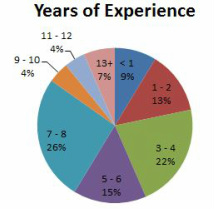 How long have you been using the Hammer editor? Experience of participants ranges from 1 month to 16 years (including WorldCraft experience). What projects have you created using the editor? The most commonly mentioned games were Left-4-Dead 1/2, Counter-Strike: Source/Global Offensive, Half-Life 2, and Team Fortress 2. For people just starting with the editor what key pieces of advice can you offer them?
What do you find to be irritating when using the editor?
If you could add one feature to the editor what would it be? Overwhelmingly, the most popular response to this question (43% of those surveyed) was the desire to have some form of real-time preview mode so that designers can properly see the lighting of their environment without having to compile.
When preparing to start a new map/level/campaign how do you start? The answers to this question ranged from no 'preparation work at all' to a very robust process of pre-production.
What is an important and often overlooked element in map making? The most popular response to this question, by far, was lighting.
What is your work process like?
Any funny or crazy editor stories to share? The majority of responses involved some form of corrupted or lost files.
If you have ever collaborated with other developers please share your experience.
Have you ever used any other level editors? If yes, which ones and how do they compare? The most commonly mentioned editors in this response were Unreal/UDK, CryENGINE/Sandbox, & Unity.
Do you have any interesting Easter eggs in any of your designs?
Survey group: TZK203, internethandle, Filip, novalin, Punishment, Wouter Pleizier / Blueberry_pie, Jacol, George "Noface" Campbell, Bernt Andreas, Brickinator, marnamai, Arran Seaton, David Zetterdahl "LordDz", SM Sith Lord, Ark11, Nijbu, Nicole, Rectus, Hopna, Jess Nielsen, Oliver "FRAG" Curtis, Garrador, The_Blazer, DerpyBlade or Alex, HoliestCow, Peter Brev, unknown, SotaPoika, Text_Fish, Mr Funreal, Roflmahwafflz, Fauckers, Rev_deaddiet, insane3004, someone, Marcy, Sam Morris, Leafo, Devieus, 4echo, Element, needadonut, Dan, BlazingOwnager, RainingMetal, & RuninWivSizors.
Recently I had a chance to run some questions by Cole Marshall, musician, game developer, father, and all around creative guy. In the music world he is known as Commercial, and you can check out some of his tracks on his SoundCloud page. My personal favorite songs of his are STAT and I'd Rather Slay Dragons Than Hoes.  Brian Riggsbee: Let's start by talking about your music. How did you get involved in composing? Cole Marshall: Magix Music Maker. I honestly forget how I first got my hands on that program but it had to be 12-14 years ago. I remember thinking, "I can take sounds, put them together, press play, and it plays back!?" This was when I was just getting into Techno/Electronic and there was a decent library of samples and loops. Once I finished my first real "song" and felt that rush of endorphins the second time you play back a track that you've produced I was hooked.  BR: What is your process like when writing music? Is it very experimental or do you have a clear vision in your head? CM: It's a smattering of a few different things. Sometimes I'll start with a nifty melody I discovered on the guitar or keyboard (I'm by no means a decent player of each of these instruments). Sometimes I'll just fool around in Reason until I get a nice Timbre out of one of the synths and that'll be enough inspiration to make a nice lead out of. Other times it'll be an inspirational track I hear that gets me to sit down and churn something out. I think my most successful songs have all come from 100% improvisation, though. Nothin' beats tinkering on a melody until you find that note that makes it all come together. BR: We live in an age now of self-publishing, where an artist can skip the studios and producers, and instead create their work at home and upload it to their website or iTunes. As someone who has tried out this new method of development and distribution what are your thoughts on it? CM: This is a depressing topic for me. Not because I think ease of distribution is a bad thing for individual artists, but because it's a bad thing for the art. The internet, while a wonderful tool, has diluted a lot of creative avenues. I'm very confident in saying there will never again be a Beatles/Rolling Stones/Michael Jackson. Lack of talent is not the reason, it's over-saturation. The death of truly famous artists has already happened in the visual arts. The last famous artist was Warhol and there will never be another because "art" is such a broad spectrum now. Music is almost there. I think Daft Punk and Radiohead are our swan songs. There are so many options for visual and audible entertainment that it's paralyzing. Our attention span shrinks by the nanosecond. We all think we're artists. Nobody is special. It's a bummer. I'm sorry if it seems as though I'm a bummer. Life is still great! BR: Are you working on any new music? CM: I wish, but no. I've got a 15-month-old and work full-time on top of a lousy commute. When I get home from work, I eat dinner, watch Mad Men, then go to sleep. BR: Which musicians inspire you the most? Which artist or band would you like to see removed from the Earth? CM: It's hard to compile a list of all-time-most-inspirational musicians for me. Recently, I'd say Com Truise. His tracks make you feel so cool. An unattractive man could be rolling an d20 saving throw while simultaneously popping a zit on his nose and still get babes to fawn over him as long as Com Truise was supplying some beats. The dude's a beast. I also admire Dosh very much. He's a super talented musician and I've rediscovered this gem recently: http://www.youtube.com/watch?v=my4zz0P5Ic0 As for people I'd like to kill... I don't know. I really hate the B-52's "Love Shack". I'd erase that song but I don't think I'd want to erase them. I'm sure their nice enough people. Let people express themselves even if it's annoying :D BR: What are your thoughts on the importance of music and SFX in video games? Do you feel that music takes a back seat in development too often? CM: I'm not sure if it takes a backseat too often, because making the game fun is the most important thing. If investing heavily into the soundtrack isn't in the scope of a great project I don't think it's the end of the world. That said, a lot of my most cherished songs come from video games ( ahem: http://www.youtube.com/watch?v=WnRmY7fsGdM ) and I don't think it's too far-fetched to think that the next Mario theme is out there. I'm sure every developer would want the first song in their game to be that iconic. Most of the best songs came from an era when the hardest decision you had to make about art was what 8 colors should be used. Because of that, I think music selection was more focused and significant. I'm not sure if I've answered the question but this is what my brain made me type.
BR: Speaking of video games, as a developer who has worked in a variety of departments ranging from design to promotion, what interests you the most in game development and why? Are their tasks you just dread? CM: I have a bad case of development ADD. Sometimes I'll look at a piece of concept art and think, "Man, this is so badass. These guys have it made! They just draw monsters all day. They are the pioneers of development! I want to be that!" Other times I find myself writing probability charts for outcomes from opening a dusty treasure chest. Currently my ADD has focused on story-telling. I'd love to have people mad at me for killing off a character or deciding to make the hero a boy instead of a man. It's all fun to me. If I can imagine the person I'm designing for appreciate my design choices, I'm happy. I dead any task that I think wont have an outcome that our target audience will be excited about. How are you gonna make an awesome laser cannon if you don't think your target audience will appreciate that a laser cannon is mounted to your hero's terrier? BR: If you had one piece of advice for someone looking to start a career in the video game industry, what would it be? CM: To get your foot in the door, play a lot of games, work on your own projects, and apply to QA positions at your favorite studios. If you don't get a call back, apply again in 2 weeks. If you don't get a call back, apply again in 2 weeks. Rinse and repeat until you get a call back. Once you're in the building be excited. I'm not saying foam at the mouth and spike your hair with LA looks. I'm sayin' be noticeably appreciative to have the opportunity to interview at a gaming company. Nobody wants to hire someone because they like Final Fantasy games. They want to hire someone that likes Final Fantasy and wants to make them better. Once you get the job, have an opinion about everything while avoiding being an annoyance. This is the most difficult part. If you don't like the way the enemy's AI causes unrealistic behavior, tell the designer what you like about it and offer ways to improve it. If it's a good idea, awesome! If it's not a good idea, "Hey, that new QA kid is motivated." Also, learn Outlook. There's a bunch of other crap you should know but I didn't know at the beginning so neither will you :D  BR: Favorite video games of all time. Go. CM: Since this list could be anywhere from 1-100 I'll settle with the middle decimal point and make a top ten list in no particular order: Final Fantasy Tactics, Final Fantasy 7, Golden Eye, NHL 94, World of Warcraft, Diablo 2, Starcraft 2, Street Fighter 2/3/4 (can't choose), Ogre Battle, WCW vs NWO Joining me today I have Shawn Snelling, designer and mapper of the popular Counter-Strike: Global Offensive map cs_museum. You can download cs_museum in the Steam Workshop and view Shawn's portfolio on his website. 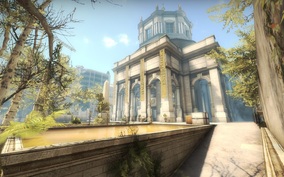 Brian Riggsbee: cs_museum, your latest project for CS:GO, is quite the beautiful map. What are your favorite aspects of it? Are there any parts you struggled with? Shawn Snelling: Thank you! My favorite aspect is how naturalistic and real everything turned out, which I have to attribute to good fortune and some planning. I didn't struggle with much during this project, but optimization was of course difficult considering the open environments outside of the Museum by the street and the vast number of exits and windows involved. If I struggled with anything, it was the technical limitations of the current incarnation of the Source engine. 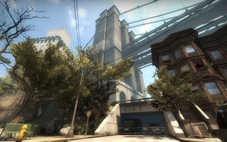 BR: The lighting in cs_museum is definitely a strong point. What advice can you provide for other mappers out there that may be struggling with achieving good lighting? SS: Good lighting is tough. It's even tougher on Source because you have to compile and wait ten minutes to see anything. I think the best strategy is to know what you want and not settle for something that seems "good enough." You have that vision in your mind, so keep making those tweaks even though it can be mind-numbing and requires a lot of patience. Until you get to where you want to be, you've got more work to do. But it's not an exact science. I remember many times thinking it would be impossible to get the lighting I wanted in the grand hall (T-Spawn), for instance, but I just kept plugging away at it, loading the map up countless times trying to get it right. In the end, I think I finally did. 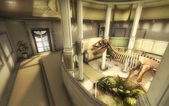 BR: I noticed there are a few community members listed in the credits for cs_museum. How did they contribute to the project? SS: 3DNJ did models (T-rex, golden lights, and also converted some of my brushwork into more optimized models) and penE did textures for the map. They are both immensely talented and helped elevate the map and realize the ambition of the map to place players into an environment that feels real. 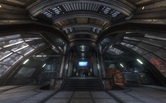 BR: Tell us a little about some of your past projects. SS: I worked on Natural Selection 2, on the map Veil primarily. The first map I released was called Anemia, for Day of Defeat: Source, which I'm still very proud of all these years later. That was a paradigm shift for me, to go from loving other people's levels, to then release one of my own. I think if you want to look at my work that's a great place to start. As for Veil, I think that's a real interesting one as well, it was sort of my college for level design. I learned most of what I know on Veil, which was originally an NS1 map, in my opinion the most classic and crucial one to the first game. I knew that to bring it to an entirely new engine and generation of gamers would be a big challenge, but I was worried nobody else would do it right. That experience taught me to respect the classics, if you ever want to make a classic. BR: Are you working on any new projects now? Are there any games or projects out there you would love to be a part of? SS: I'm working on a competitive bombsite map for Counter-Strike:GO which is set in India. I want to enter it into a big contest, the one CEVO is holding. If I do, the map will have been made in one month. Which I'm excited and frightened about trying to do. I want to be involved with whatever Valve is working on. Simple answer. Other than that, I really like the Deus Ex franchise. Bioshock is up there as well. Those kind of games motivate me to continue making levels. But at the moment, to be honest, I'm involved in the projects I want to be involved in: I'm making cool levels and working with talented people, I just need it to be a more sustainable lifestyle financially, haha.  BR: What is your all-time cherished retro video game? SS: I think I'd have to break that into multiple parts to do it justice. Music: Mega-Man 2 Story: Zelda Ocarina of Time/Final Fantasy 7 Multiplayer: Day of Defeat 1/Super Smash Bros. 1 Greatest of all time: Super Mario 64 Interview with Anders Fray, creator of The Final Cut for Left-4-Dead 2 and developer for Forge2/18/2013 Today I am joined with Anders Fray, creator of the Left-4-Dead 2 map The Final Cut and world builder for Forge. You can find more details on his other projects on his website. Brian Riggsbee: How did you get started in game development? Anders Fray: My first game development experience would be making maps for the demo of Delta Force 2 (released 1999). DF2 was the first online FPS that I had ever played, and I had a blast. The maps were infinite in size because of the tiling landscape which was used, so you could be a badass sniper from hundreds of meters away. Learning to arch and lead your bullets far ahead of your enemy was a necessity, as there would be epic sniper battles from one hill to the next. Seeing an FPS multiplayer map with an infinite size was pretty amazing to me, and it helped to further spark my interest in the genre. The limiting aspect of making maps for the demo of DF2 was a fun and rewarding experience. Because it was the demo, the tools and assets I had to work with were of a limited nature. This forced me to get creative and explore what I could accomplish with limited choices. The level maker was very simple, with just an overhead view of the map. There was only one landscape to build on, and only a couple assets to use in total. There was a very simple logic system which allowed for some basic gameplay scripting, but I didn't know much about it so it wasn't used in many of my maps. Including the full version of the game, I probably made over fifty maps for the Delta Force 2 series. I actually have screenshots of 37 of my demo maps over on my own blog, if anyone is curious to what my first ever maps looked like. I had an amazing time making maps for the demo of Delta Force 2, as the community was small and most people knew each other. Making a map for a game which you love to play, and then showing it off to your online buddies is a very rewarding experience. My love for DF2 helped push me in to learning how to create more things on the computer, such as making websites for my DF2 maps, and making Flash website intros for clans that I played with. On the link I just posted, there is an example of some of the horrible Flash work I did back in high school (everyone has to start somewhere!). It is an FPS game I tried to make in Flash using a combination of 3ds Max, Flash, and Swift 3d. 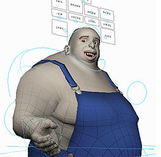 BR: What are some of your favorite past projects and why? AF: As mentioned before, definitely making maps for Delta Force 2. Having control over my gaming experience was a wonderful thing to experience during high school, as it helped to give me direction during that time with the end result being myself getting a degree in game design, leading to my first job in the video game industry. My second memorable project would have to be a character rig I made during school at The Art Institute of Portland. After my second character rigging class I polished up one of my projects and uploaded it to creativecrash.com (formerly highend3d.com). It was a character rig named “Chip”, who was very plump and comedic in nature. The character amassed a good 35,000 downloads or so, and was animated by students and professionals from all over the world. Every now and then I would have an animator e-mail me about their usage of my character, and it was very rewarding to see how grateful people were to be able to animate the character for their personal projects. Near the end of my time at The Art Institute, I discovered that he was animated in a popular SIGGRAPH animation competition by a couple of teams participating. Much like my Delta Force 2 maps, it was great to see people enjoy and be grateful of the work and effort I had put forth in to my digital projects.  My third very memorable project would be one which I worked on professionally: Kinect Adventures. During my time at Liquid Development I worked on a variety of projects. Some of those projects lasted for longer then the work I did on Kinect Adventures, but Kinect Adventures is one which I can remember well for the fun I had. The main thing I did was Unreal Integration, which would be the importing/integration of artist's content in to the game (models/textures). Even though a lot of what I did on Kinect Adventures could be described as tedious (Unreal Integration, fixing bugs, cleaning up sloppy artists' work), my over-arching experience was a very positive one. A large amount of my co-workers were all on the Kinect Adventures project, so there was a lot of collaboration and comradery between everyone. Stepping in to the side office to have a quick River Rush competition was a common occurrence. Working on Kinect Adventures was also the first time I ever went on a business trip. That trip included going up to Microsoft Game Studios to assist them in optimizing the game, and then on a 2nd occasion to fix a backlog of bugs which were being neglected. Collaborating with new people in a new work environment helped to show me the possibilities of what a video game studio can be. My fourth memorable project would have to be The Final Cut for Left 4 Dead 2, as the map helped me to acquire a World Building / Level Design job at a different video game studio, SuperGenius. As I found myself wanting to expand my horizons and move on from Liquid, I went on unemployment and started searching for jobs. I filled most of that time with working on The Final Cut, and also playing a LOT of Mount and Blade: Warband (Native Module). I know it doesn't really look like it, but a good 1000 or so hours went in to the production of The Final Cut. A lot of that time was spent searching for information about Source to troubleshoot issues with the map, and to figure out how to make certain things, such as a working elevator. I worked on the map for a year to year and a half, and it ended paying off with the World Building job that I have now. That time wasn't entirely spent working on The Final Cut, but a good chunk of it sure was. It has been very rewarding to see how many people have downloaded and enjoyed playing my map, since I am used to not seeing so much usage and feedback/comments directly relating to my work. BR: I originally ran into your work while playing your L4D2 map The Final Cut. Tell us what the theme means to you and why you selected it. Is it based on a real place? AF: To be frank, the theme of The Final Cut doesn't mean all that much to me. I think I ended up creating a theater map due to not having any better ideas. It just made sense to make a theater map for L4D2. After working on The Final Cut for a good while, I discovered that there had already been a popular theater map made for Left 4 Dead 2 (I can't seem to find it on L4Dmaps.com), and I was a little disappointed. I kept chugging through production though, since I was already a ways in. For some reason I thought I was being original. BR: Why L4D2? What drew you into that series? AF: L4D and L4D2 were the first FPS games which I played where both teams were of a distinctly different nature with different mechanics and gameplay. I have always loved first person shooters, ranging from the original Wolfenstein, to Duke Nukem 3D, Goldeneye (N64), Delta Force 2, Global Operations, Call of Duty 1 and 2, etc... and the L4D series showed me a new way of looking at the FPS genre. The early days of L4D was a very cool time for me. I remember my first “Oh shit!” moment when I battled a Tank for the first time. Everyone was running around chaotically freaking out, because nobody knew how to coordinate together to take him down easily (hilarious stuff!). The early days of L4D were some of the most fun for me, as I was still very new to the mechanics. While I did have a lot of fun with L4D2 also, the game felt more of a grind then anything, as I knew what to expect and how to counter it. I did have a lot of fun playing with some old clan mates of mine doing some competitive Scavenge, but that died off relatively quickly when everyone decided to stop playing that game mode. 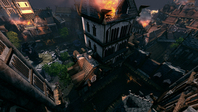 BR: What are you working on now? AF: Nowadays I am making maps for an indie game called Forge, using the Unreal III engine. It is a pretty amazing PvP game at its core, but still has a ways to go before the game establishes itself in the PvP scene. The next couple of patches for the game will address some of the largest glaring omissions in the game, such as the lack of a server browser. The game will continue to grow as production cruises along, and will eventually turn in to a full-fledged awesome PvP experience. BR: What are some of the biggest differences about mapping in Unreal v. Hammer/Source? What’s one thing you find to be painful or difficult about working in each? AF: I haven't touched the Source engine in a while, so I may be a little off on my recollection. The Hammer World Editor is a bit of a challenge to use. There isn't as much information on the internet about the level editor as there is for Unreal III. This can be an extreme nuisance when trying to teach yourself to use the editor, as you will be sifting through the Source wiki and every forum you can find on the internet that has any information about using the Source engine. The video tutorials on YouTube are quite scarce and not every helpful also. Some of the issues I had on The Final Cut took months to troubleshoot because of this fact. The more specific of a question or issue you have, the harder the answer will be to find. Making maps in The Hammer World Editor tends to consist move heavily of brushes then Unreal. Brushes are just primitive shapes (boxes, cylinders) which you piece together in a lego-like fashion within the editor to lay the foundation for your map. While Unreal also makes use of brushes, most game companies which use the engine these days tend to use them sparingly. The foundation of Unreal games consists more of terrain/landscape and static meshes. Hammer's asset/content browser is quite crude in nature and unintuitive, whereas Unreal's browser is very user friendly. The integration of assets (static meshes, textures) is also an unnecessarily complicated process in Hammer compared to Unreal. I worked on a source MOD project during school, and during that time I integrated a lot of assets in to the game. The process was not intuitive in any way shape or form. I suppose if I wanted to simplify my answer to this question, it could be summed up very easily: Source engine / Hammer World Editor = not very intuitive and user friendly (less support and information) Unreal Engine = much more intuitive and user friendly with more next-gen features/technology (with more support and information) The Unreal Engine is a widespread engine that many companies use to make video games, whereas Source is not. BR: What unreleased games are you looking forward to? AF: I am very very bad at following video games nowadays. I tend to get caught up in my work and stick to a single PC game for a long period of time: my last game being, Mount and Blade: Warband. There isn't any particular game I am waiting to come out. At the moment I am playing a lot of Forge: trying to keep ahead of the curve while staying a part of the community so that I am able to fix the issues in the game and make maps that compliment the mechanics of the game. 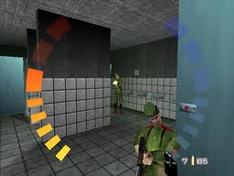 BR: What is a game that stands out to you from your childhood that had a big impact on you as a developer? AF: Now that I think of it, I think Goldeneye for the Nintendo 64 had a pretty big impact on me as a developer. I remember the excitement of getting an N64 for Christmas, as I had two older brothers to play with. I think our constant multiplayer action and competitiveness towards each other helped fuel my interest for first person shooter video games. The complexity of interaction between people in a fun multiplayer environment can be an amazingly fun experience. It can also be a very stressful thing. I hope to work on more video games in the future which help redefine the typical FPS experience.  Today I am joined with my first of many guests, R.T Frisk, creator of the popular Left-4-Dead 2 campaign Suicide Blitz 2. You can download his campaign at l4dmaps.com and find more information on his website. Brian Riggsbee: How did you originally get involved in game development? R.T. Frisk: Well, it all started with Doom 3 actually. I fired up those tools not knowing what to expect, and ended up making my first room out of some gooey, flesh looking walls. Not as gratifying as I had hoped. Pretty crappy actually but it did open the door of mapping to me. After that, I did some mapping in Battlefield 2, F.E.A.R. and Crysis. I did these mostly to write tutorials for others. 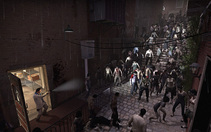 BR: What are some of your all-time favorite games? RTF: Let's see: Half-Life series, Starsiege Tribes, Asheron's Call, Portal series, Battlefield 1942, and Psychonauts just to name a few! BR: What about L4D/L4D2 drew you into playing them, initially? RTF: Zombies and co-op! When I first heard that this was going to be a reality, I was immediately hooked. Not to mention the great atmosphere they created with No Mercy when I first played the demo. It didn't take much, I was hooked very quickly.  BR: Tell us a little bit about your inspiration for Suicide Blitz 2. Is it based on any real locations? RTF: In between all the games I mapped for previously (and Left 4 Dead), I tinkered around with Source quite a bit. Made some CS and Half-Life maps mostly for fun. So when I heard that there was a zombie co-op game coming out, I KNEW I needed to map for it. When I started on Suicide Blitz for L4D, I just wanted to make an urban style map with some locations that had some familiarity. So Suicide Blitz started out pretty basic. Basic city, and some underground parts not too different from the original L4D series. This always bugged me, so when I heard about L4D2 coming out, I knew I could go back and really spruce up my campaign how I originally wanted to. So with that in mind, I went through every single map and revamped it. There are definitely some real-world references in the campaign. Map 2: The Riverwalk, is based on the Riverwalk in San Antonio, Texas. Granted it is loosely based off of it, but it is a massive influence in the design and look. The bowling alley is based off this old bowling alley in Houston I used to bowl in when I was younger. The police station/jail is based off some pictures and artist renditions I found on the web. The Stadium is a bit of a mish-mash of different stadiums I had been to growing up. The ramps that lead up to the upper levels is based on the Astrodome outer ramps and the concourse area is based off the Astrodome as well. Even one area on map 4 is based off a scene from 'The Walking Dead'. Basically, I like to use real-world locations as either inspiration or accuracy, albeit they are not always perfectly copied. 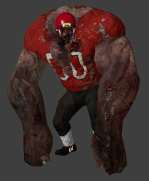 BR: What is your favorite feature in SB2? RTF: Probably the train ride! I always loved the idea of having a cinematic escape scene that was live action. This map was originally intended to be entirely fought in such a manner, but proved too difficult with the nav. So I settled for this little scene instead. BR: What aspects of development did you find to be challenging when creating SB2? RTF: Optimization for sure. People tend to list NAV I have noticed when being asked that, but I really found the optimization to be the most challenging given the amount of custom content I wanted to include. I learned a lot in doing this, so no regrets. BR: When creating a campaign for L4D2, what is your general process like? RTF: First, I just thought over the campaign for a couple of weeks. After some ideas started to come to me, I started taking notes and doing some rough outlines of how I wanted the levels to turn out. I always wanted to try and do a switch off of different fighting areas. Basically, close quarter and a more open area fighting. Once I had a good grasp on how I wanted the levels to go, I would then start the mapping process. I didn't always map SB(2) in a straight line. I would often jump around from map to map to keep my brain on its toes as well as break up the monotony of mapping on the same level extensively. Plus when I went back and looked at a map I had previously been working on, it seemed more "fresh" to me. Always good to take a break, if only from ONE of the maps. After a map's building stage was done, I would go through and detail it. I used to try and make navigation on the go as I was making these maps, but proved annoying to edit the nav whenever I added player level details. Detailing would be an ongoing thing even after I thought I was done. Oh and then more detailing, and then MORE... well you get my drift. I could probably talk about this for a week so I will compress it the best I can. 1. Brainstorming layout and overall theme of the campaign 2. Level Design - Co-op, VS and other game modes 3. Detailing 4. Nav 5. PLAYTESTING A LOT - By myself and others 6. Taking the feedback from playtesting and implementing 7. Getting a working alpha/beta and first release for testing 8. More playtesting 9. Release Summarizing years of work into 8 points seems so easy! 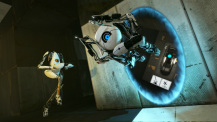 BR: If you could request any features for L4D3, what would they be? RTF: This one is tough. I like the recipe for gameplay that Valve achieved with the L4D series, but would love to see a bit more immersion in a L4D3 version. More NPCs, more assets by default, more characters to choose from, Workshop being available from the get go with A LOT of cloud space and for the game to be designed so custom content can be easily implemented from the start. I could probably think of more things but these are important to me. BR: What are some things you learned about the Hammer editor that you wish you knew earlier? RTF: Utilizing the crap out of hotkeys and if one doesn't exist, creating my own via script in Autohotkey. BR: Are you working on any new projects right now? RTF: I am currently working on a Portal 2 "campaign" if you will, that I want to release through the workshop. It is going well, and I will be releasing it this year. BR: If the zombie apocalypse were to happen, what would be your plan for survival? RTF: Ah ha! So you want my super-secret Zombie survival plan eh? Well, I would try to meet up with my family in a sort of out in the middle of nowhere place we have discussed before. That's right, we already have a zombie outbreak plan in the works! Unfortunately, the plan only calls for meeting somewhere if it were to happen. So I would assume after that, we would eventually all be eaten by zombies... So with that in mind, my survival plan is to be turned, and become king of the zombies. |
AuthorBrian Riggsbee lives in San Francisco CA. He enjoys gaming, writing, creating art, practicing Brazilian Jiu-Jitsu, chasing adorable dogs, and spending time with his wife and boy. Categories
All
Archives
December 2022
|
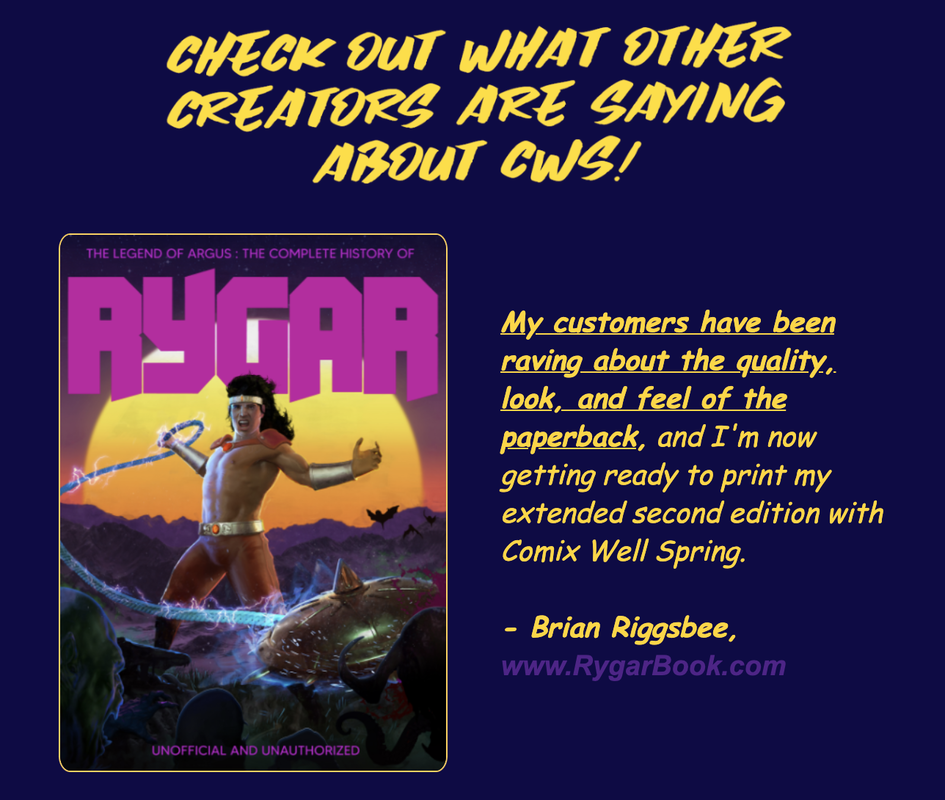
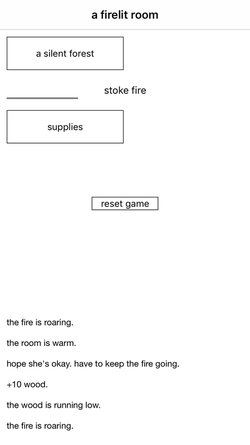
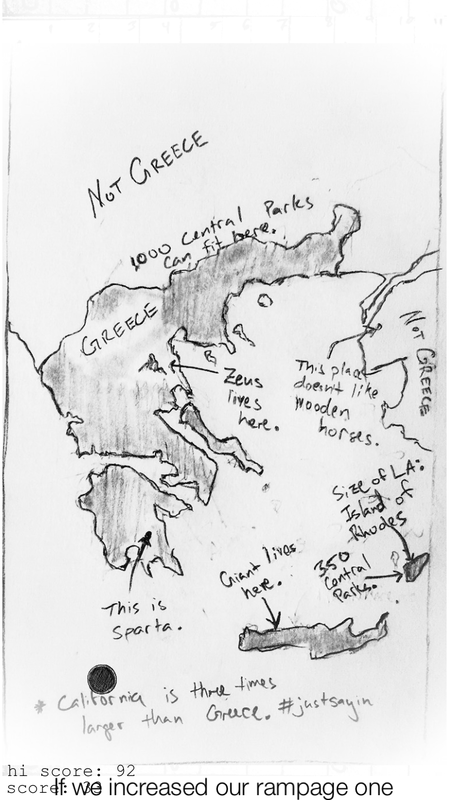
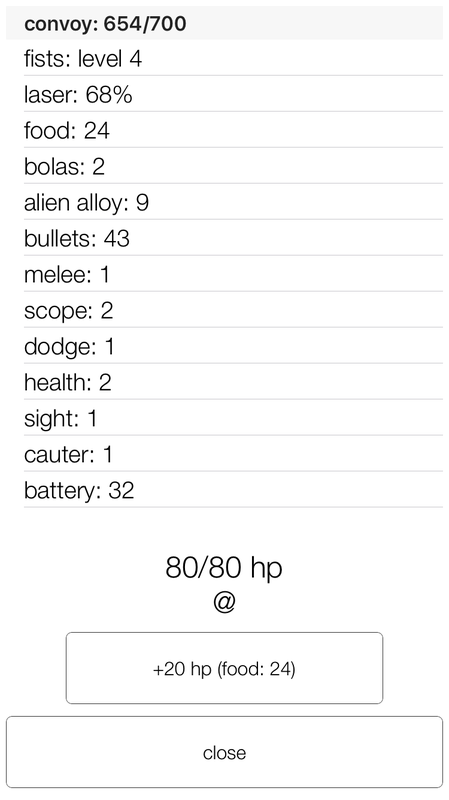
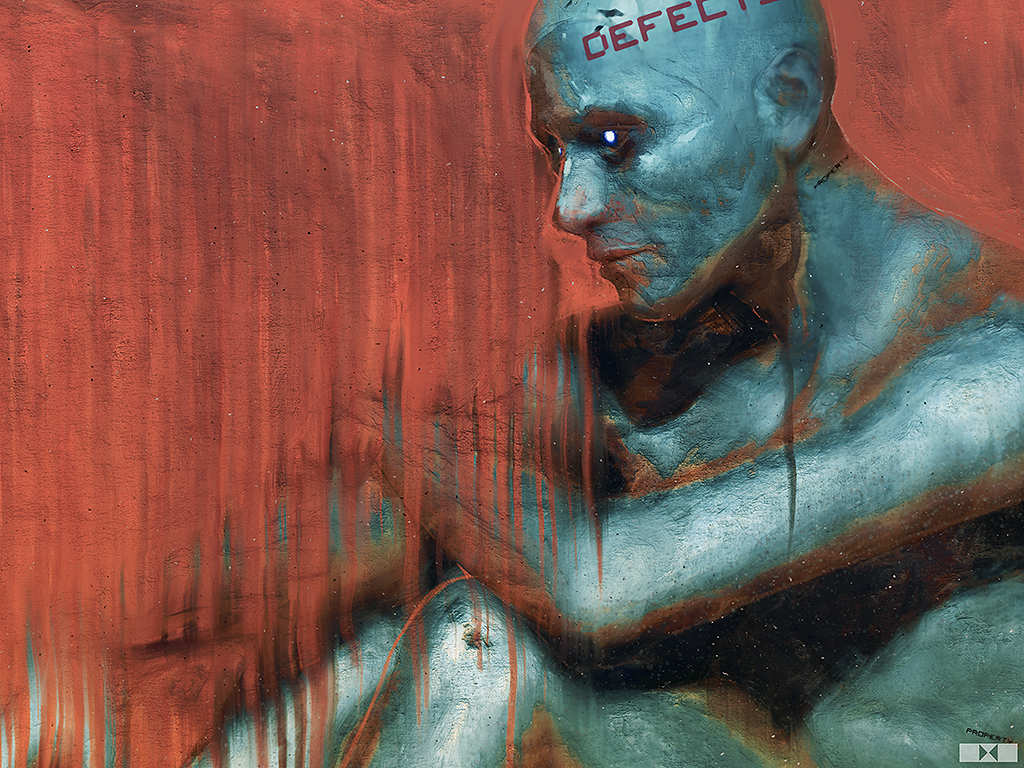
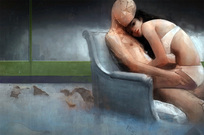
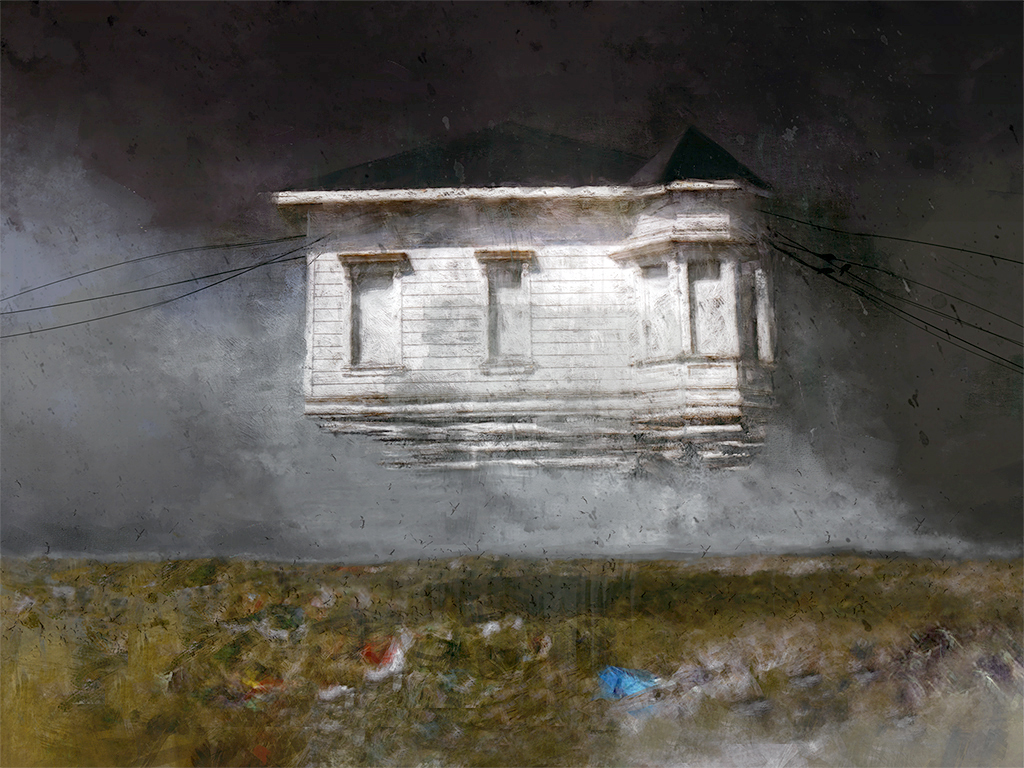
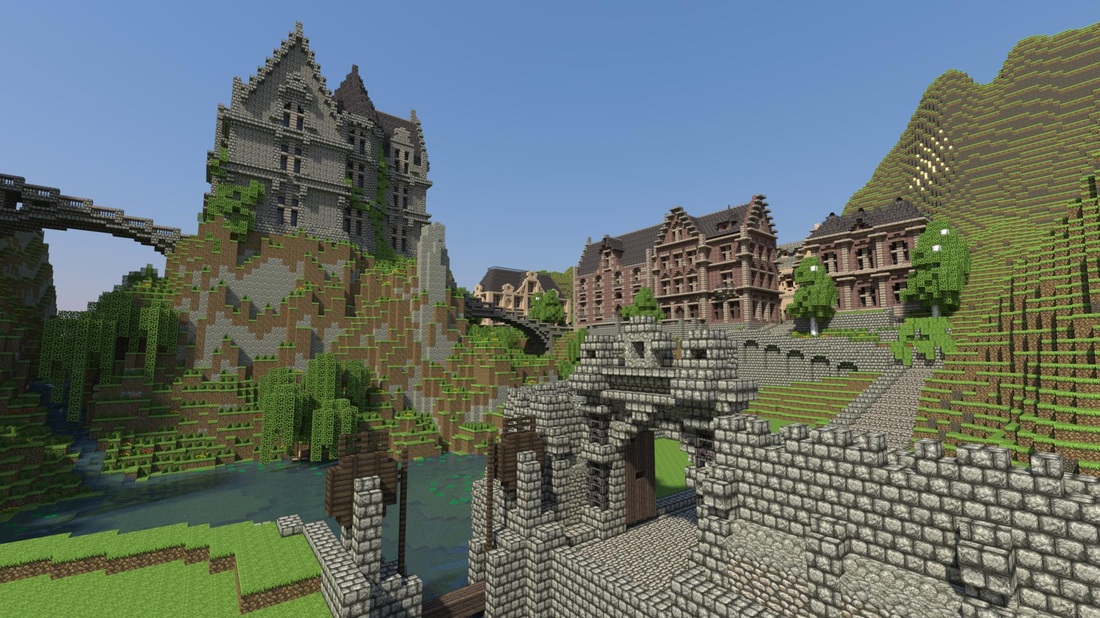
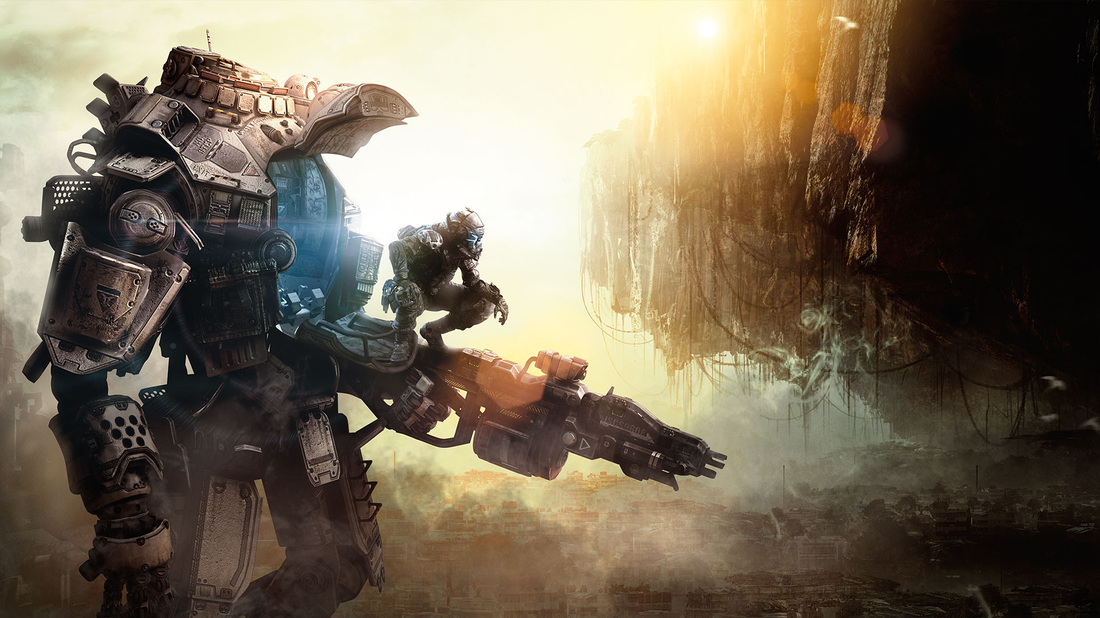
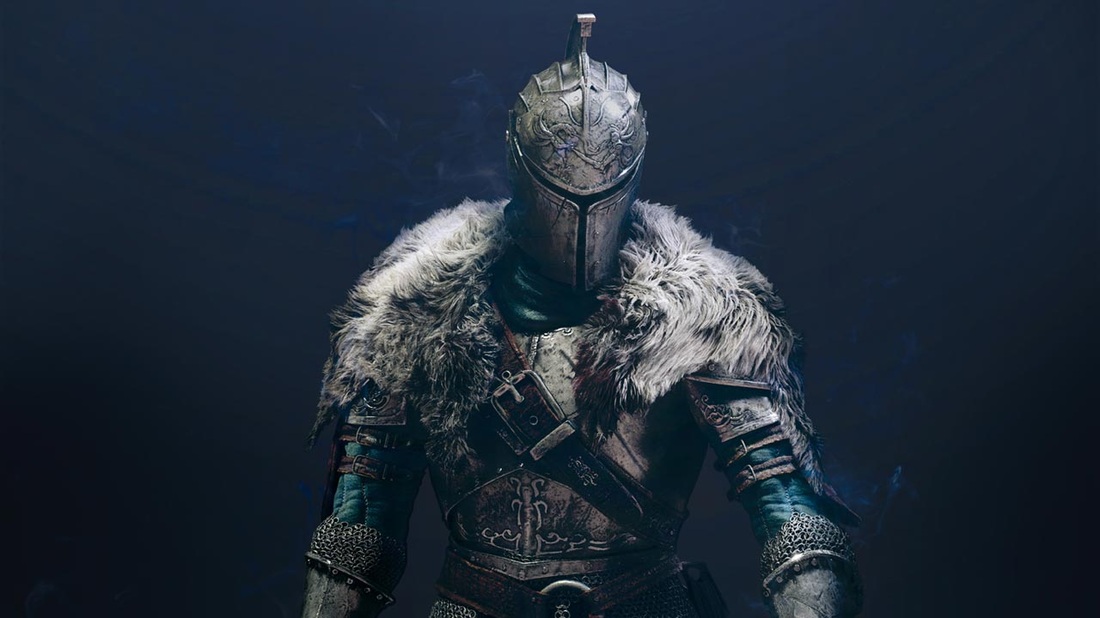




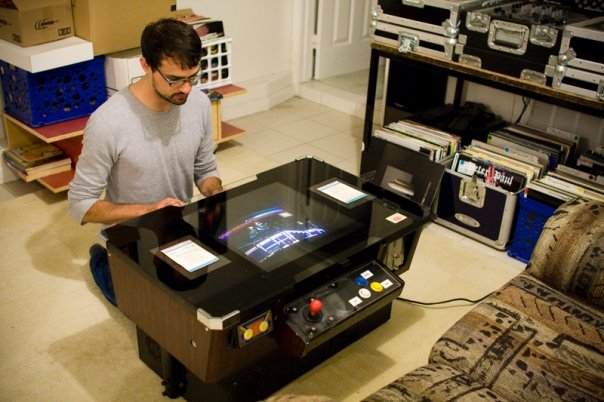
 RSS Feed
RSS Feed